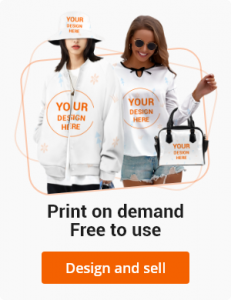In the online business world, two terms are frequently mentioned; they are “print on demand” and “dropshipping.” It is not uncommon to get them confused. So, you might be asking, “Dropshipping vs. Print on demand: which model is right for me?”
Each has its pros and cons. With print on demand, you can sell personalized products without having inventory. While dropshipping occurs when you sell already-made products that are shipped from suppliers.
In this blog, the underlying concepts of each model will be discussed as we compare how effective each is and which model is likely to benefit your company more.
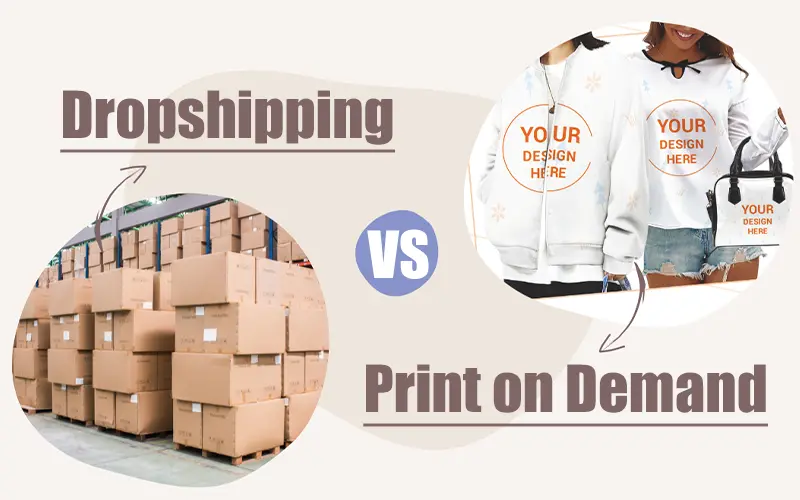
What is Dropshipping?
Dropshipping is a retail strategy that allows online store owners to sell products without holding physical stock. Instead, they buy from dropshipping suppliers who ship to customers directly. Here’s how it works: It entails creating an online shop and listing the products that an individual wishes to sell. When your customers place orders, you forward the orders to the supplier instead of delivering them directly. The supplier then transports the product right to your customer.
The best thing about dropshipping is that you do not need a lot of money to begin with. You do not have to lease a huge warehouse or have an inventory of goods for your ecommerce business. All you need is a computer along with an internet connection and a good vision for the products. Also, it’s easy to source virtually anything online and offer it without having to stock up on unsellable items.
What is Print On Demand?
With Print On Demand (POD), you sell custom-designed products without keeping any inventory. You create and sell unique designs, and a print on demand supplier handles order fulfillment, including printing, packaging, and shipping of products only when a customer places an order.
In a POD setup, you upload your designs to a POD platform and choose the products you want to offer. When a customer makes a purchase, the print on demand companies print your design on the selected product and ship it directly to the customer.
Dropshipping vs. Print On Demand: Similarities
Both dropshipping and print on demand have elements that are common to them and that is why people consider them to start an online business with little capital. Let’s take a deeper look at how these models compare:
1. Low Startup Costs
Did you know that both dropshipping and print on demand are cheap to start? The typical traditional stores call for large capital investments. However, dropshippers don’t need to buy and stock products when they open an online store and place products for sale. The supplier is paid only after you have sold a product or a service to a customer.
Print on demand functions in a similar manner because you can design and sell your products without purchasing inventory upfront. Your designs are printed and forwarded for shipment by a third party only when a customer makes an order. This implies that you do not have to spend your money on acquiring merchandise stock or even renting a store.
2. No Inventory
Both models do not involve storing physical inventories. The management of stock is usually regarded as a herculean task in the conventional flow of traditional retail outlets. You have to reorder products, store them, and keep records of them, which is sometimes bulky and expensive.
Dropshipping doesn’t work under the traditional supply chain concept since you do not hold or manage stock. Instead, you get the supplier to take care of stock and deliver consignments on your behalf in a way that suits you. This gives you ample time to concentrate on marketing your products and running your business as a whole.
Similar to dropshipping, print-on-demand does not lead to the necessity of managing inventories. You develop your products in terms of the designs. However, your print on demand supplier prints and dispatches your products when the order occurs.
This means that you do not have to own large stocks of the products or be stuck with what did not sell. In this regard, both models make the process easier for the main players by offloading the inventory risk onto third parties.
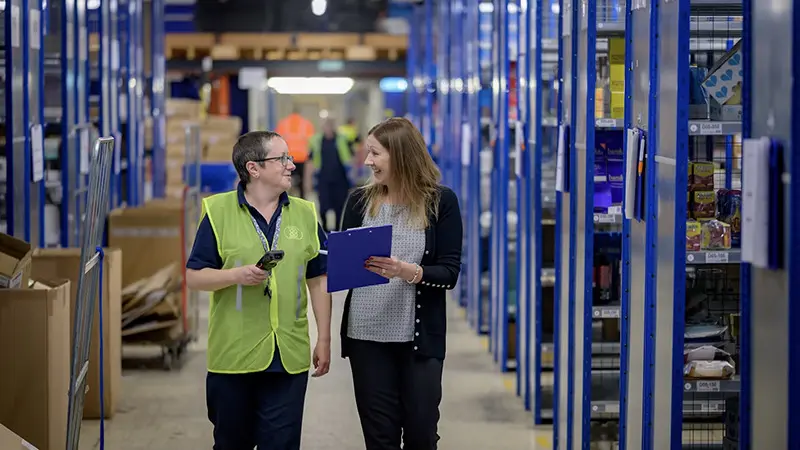
3. Easily Scalable
Dropshipping and print on demand both offer scalability benefits for businesses. As your business expands, these models enable you to grow without changing how you operate. With dropshipping, you can easily add products with supplier categories. Your supplier will manage the demand without requiring you to invest in more overhead resources.
Print on demand provides an advantage in scalability. You can introduce designs and products to your lineup without concerns about production capacity or inventory limitations. These models facilitate smoother business growth compared to retail, which often involves logistical hurdles and added expenses.
4. Low Risks
The low financial risk associated with dropshipping and print on demand is a major draw for many new business owners. Since you don’t need to invest in inventory upfront, you’re less exposed to the risk of holding unsold products. With dropshipping, you can start an online business without money since you only pay after you’ve made sales. This helps avoid the risk of getting stuck with unsold inventory.
Print on demand also minimizes financial risk since you only pay for products after a sale is made. There’s no need to purchase large quantities of stock that might not sell. This low-risk nature of both models is very appealing to people who wish to start an online business with minimal financial exposure.
5. Passive Income
Both dropshipping and print on demand have the potential to generate passive income. Once your store is set up and running, you can earn money with relatively little ongoing effort. In dropshipping, after establishing your store and integrating with suppliers, you can make sales with minimal daily management. Similarly, print on demand allows you to generate income from your designs with minimal involvement in the production and shipping process.
While neither model is entirely hands-off, they offer the possibility of earning money passively. You’ll need to handle marketing, customer service, and other aspects of ecommerce business, but the core income generation can be automated. This allows you to focus on growing your business or pursuing other ventures.
6. Skill Set
It is also important to note that the major skills that are needed in both the dropshipping and print on demand models are rather similar. Although both models work in different ways, they require a sound knowledge of electronic commerce platforms, marketing, and customer relations.
Whether you’re managing a dropshipping store or running a print on demand service, adopting these online sales strategies is necessary. The good news is that the experience you gain in one model can easily transfer to the other!

Dropshipping vs. Print On Demand: Differences
Dropshipping and print on demand share similarities, but also have some major differences that set them apart. Understanding these can assist you choose the model that best suits your business needs.
1. Designs Customization
One of the major differences between dropshipping and print on demand is the level of design customization available. In the world of print on demand, you have the freedom to create and sell custom designs. Whether it’s unique artwork, personalized messages, or custom graphics, print on demand allows you to offer products that reflect your own creative input.
Dropshipping, on the other hand, typically involves selling pre-designed products from suppliers. While you can choose any products to sell, you usually don’t have the option to customize these items. Your role is primarily to market and sell the products as they are, which limits your ability to differentiate your brand based on product design.
2. Product Range
The product range available in dropshipping and print on demand can vary significantly. Dropshipping allows you to offer a broad selection of products from various suppliers. You can list items across different categories, including electronics, apparel, and home goods, depending on what suppliers offer.
Print on demand, in contrast, is more focused on items that can be customized with your designs. While you can still offer a variety of products, such as clothing, accessories, and home decor. The range of print on demand products is typically more specialized compared with dropshipping. The products you sell are often limited to those that can be easily customized and printed on demand. However, you can have more options by partnering with print on demand suppliers with a wide range of products.
3. Shipping
Shipping in dropshipping depends on the supplier’s location and their shipping methods. Because you may work with multiple suppliers, delivery times can vary widely. If a supplier is based overseas, it might take weeks for an order to arrive, which can affect customer satisfaction. Additionally, shipping costs are set by the supplier and can be inconsistent.
Print on demand, however, offers more controlled shipping times. Many print on demand companies operate global networks of printing facilities, speeding up delivery by shipping from the nearest location to the customer. Production and shipping options still play a role, but shipping from multiple locations leads to faster and more reliable shipping.
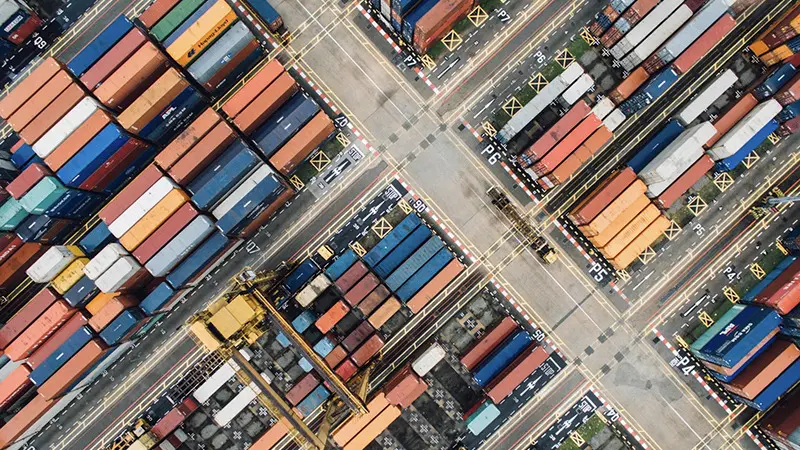
4. Quality Control
Quality control is another area where dropshipping and print on demand differ. In dropshipping, the responsibility for maintaining product quality primarily lies with the suppliers. As a dropshipper, you rely on your suppliers. To assess the quality of products before listing them, you often need to order samples of each item. This can take a lot of time and may require additional investment to evaluate the quality of various products.
Print on demand also involves relying on suppliers to maintain quality standards, but the process is somewhat different. With print on demand, you typically need to order only one sample of a customized product to test its quality. This requires minimal investment in quality review. Reviewing and approving a sample to make sure the customization aligns with your expectations.
5. Competition
Dropshipping faces high competition because many retailers sell the same products from similar suppliers. This can make it difficult to stand out, often leading to price wars and a crowded market.
Print on demand typically has lower competition due to its focus on custom and unique designs. Personalized products means a niche market. it helps reduce direct competition and allows for a more distinctive brand presence.
6. Sustainability
Sustainability is another area where dropshipping and POD diverge. Dropshipping can have a negative impact on sustainability because it often relies on suppliers with existing inventory. This means there’s a risk of overproduction. If products don’t sell, it can lead to excess waste, which isn’t great for the environment.
Print on demand is more eco-friendly. Since print on demand products are only made when customers place an order, there’s less risk of overproduction and waste.
7. Profit Margins
When it comes to profit margins, dropshipping vs. print on demand are quite different. In dropshipping, you often face lower profit margins. This happens because suppliers usually charge higher prices compared to wholesale. And since dropshippers need to stay competitive, they can’t mark up the prices too much.
On the flip side, POD can offer better profit margins. This is because customers are often willing to pay a premium for custom designs. Plus, building a brand with unique designs can increase perceived value, which means you can set higher prices.
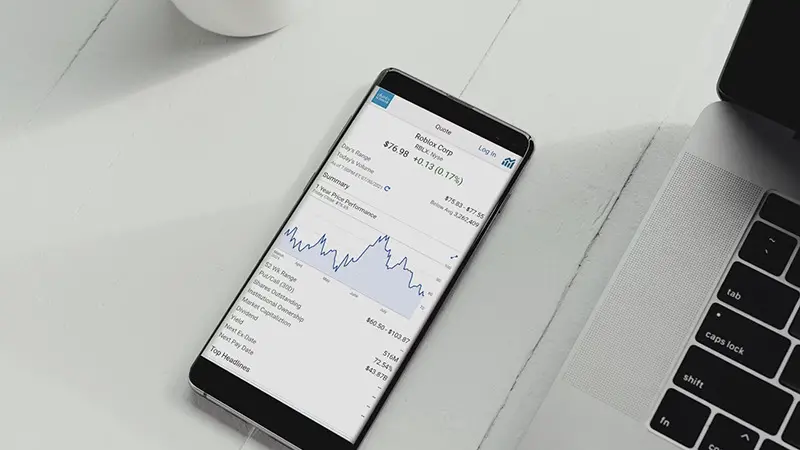
How to Choose the Right Business Model
Choosing between dropshipping and print on demand depends largely on your interests, resources, and long-term business goals. Both models have their unique advantages and can cater to different types of entrepreneurs.
Dropshipping: Who Is It For?
Dropshipping might be the right choice if you’re looking to enter the market quickly with minimal upfront investment.
One of the biggest perks of dropshipping is that you can sell almost any type of product without holding inventory. This flexibility means you can test various products and niches without committing to significant stock purchases. Additionally, dropshipping offers scalability. You can add more products anytime to your store without having to handle the physical products yourself.
For those who want to focus on building a scalable business with a broad product range, dropshipping is a practical option. It’s suited for people who prefer focus on marketing instead of inventory management. The low barrier and the ability to quickly adapt to market trends make dropshipping an appealing choice for many new entrepreneurs.
Print on Demand: Who Is It For?
On the other hand, Print on Demand is ideal if you have a flair for creativity and a passion for designing unique products. If you’re a creative designer with a knack for creating eye-catching designs, POD allows you to showcase your talents. This model is perfect for those who want to create personalized and distinctive items that stand out from the competition.
POD is also a great fit for entrepreneurs focused on building a strong brand. By offering custom-designed products, you can establish a brand that speaks with your target audience. This approach not only helps in differentiating your brand but also allows you to charge higher prices. If building a brand with a clear vision and personal touch is your goal, POD provides the tools to make that happen.
In summary, the choice between dropshipping and print on demand comes down to your passion and business objectives. If you’re looking to quickly launch a business with a wide range of products and low upfront costs, dropshipping offers a straightforward path.
Print on demand might be a better fit for individuals who are interested in unique design and brand building. Consider your interests, resources, and long-term goals carefully to determine which model aligns best with your vision for your business.

Tips for Success: Print On Demand VS Dropshipping
Both dropshipping and print on demand offer exciting opportunities with careful planning and execution. Let’s dive into some tips to help you get started.
Tips for Dropshipping
- Select a profitable niche: Identify a specific market with high demand but less competition. Conduct in-depth market research to uncover profitable niches. Consider factors like product interest, target audience size, and competition level.
- Find a reliable supplier: A trustworthy supplier is the backbone of a successful dropshipping business. Look for suppliers with fast shipping times, competitive pricing, and excellent customer service. Work on building good relationships with your suppliers to ensure smooth operations.
- Branded dropshipping: Creating a strong brand identity is essential to differentiate yourself from competitors. Develop a unique brand story, logo, and visual style. Consistent branding will also help big time in building brand recognition and loyalty.
- Sell on various channels: Diversifying your sales channels can boost your reach and sales potential. Explore platforms like Amazon, Etsy, and your own online store. Analyze each channel to identify the most profitable options.
- Focus on marketing: Marketing is key to driving traffic to your store. Utilize a combination of SMM, search engine optimization (SEO), paid advertising, email marketing, and more. Don’t be scared to experiment with marketing strategies!
Tips for Print On Demand
- Niche selection: Choosing a specific niche allows you to focus your efforts and target a particular audience. Keep your interests and passions in mind when selecting a niche. Research popular trends and identify underserved markets.
- Design quality: Invest in high-quality designs that resonate with your target audience. Create visually appealing and original designs that stand out from the competition. Consider hiring a professional graphic designer to elevate your designs.
- Branding: Develop an identity in the market that reflects your business values and target audience. Choose a memorable brand name, create a compelling logo, and define your brand voice.
- Stay updated: The print-on-demand industry is constantly evolving. So, stay updated about the latest trends, technologies, and customer preferences. Attend industry events, follow influencers, and explore new product offerings.
Remember, success in dropshipping or print on demand takes time and effort. Learn from your mistakes, take your time, and always optimize your business strategies.
The Best Dropshipping Solution – EPROLO
When it comes to finding an effective dropshipping solution, EPROLO stands out for its comprehensive features and global reach. One of the key advantages of EPROLO is its extensive product range. With a vast selection of items available, you can offer a diverse catalog to meet various customer needs and preferences. Whether you’re looking to stock electronics, apparel, home goods, or more, EPROLO provides a wide array of products to choose from.

EPROLO also boasts over 26 global warehouses strategically located around the world. This extensive network ensures faster shipping times and reliable delivery to customers no matter where they are located. The global presence helps minimize shipping delays and provides a more efficient fulfillment process, enhancing customer satisfaction.
Another notable feature is EPROLO’s branding options. They offer a range of customizable packaging and product branding services, allowing you to create a unique brand experience for your customers. This capability is crucial for building a distinctive brand identity.
EPROLO integrates seamlessly with various e-commerce platforms, making inventory management a breeze. Their integration tools streamline the process of syncing your store with EPROLO’s inventory, ensuring real-time updates and accurate stock levels.
Additionally, EPROLO provides various resources to assist with marketing efforts. From promotional materials to marketing strategies, they offer support to help you effectively promote your products and grow your business.
Importantly, EPROLO operates with no minimum order quantities (MOQ), so you start small if needed and scale up when required. This flexibility is ideal for new entrepreneurs who want to test products without committing to large quantities.
Overall, EPROLO’s advantages in product, integration, and other aspects make it a top choice for anyone looking to succeed in the dropshipping business.
The Best Print on Demand Solution – Inkedjoy
Inkedjoy emerges as a top contender with its impressive features and extensive offerings for print on demand services. One of the standout aspects of Inkedjoy is its extensive product catalog. With over 1,500+ POD products available at competitive prices, you can choose many items to customize and sell. Whether you’re interested in apparel, accessories, home decor, or other merchandise, Inkedjoy provides numerous options to suit your needs.

Inkedjoy also offers a powerful mockup generator. This tool allows you to create and preview designs in real-time, helping you visualize your artwork before placing the product. This helps you make informed decisions and perfect your designs to meet your brand’s standards.
With multiple printing facilities located in China, Australia, and the USA, Inkedjoy ensures efficient and reliable production and shipping. This reduces shipping times and costs by producing and dispatching orders from the nearest location to the customer.
Another key advantage is Inkedjoy’s fast production time. The company can produce products within 2 hours at the fastest, which means quicker turnaround times for your customers. This efficiency enhances the overall customer experience and helps you maintain a competitive edge.
Inkedjoy’s branding services, allowing you to customize packaging and add unique touches to your products. This feature helps you build a brand that offers personalized experiences to your customers.
Overall, Inkedjoy’s extensive product range, global network, and branding options make it an awesome choice. With Inkedjoy, anyone can excel in the print on demand business.
Conclusion
In the battle between dropshipping vs print on demand, the decision on which is better for you depends on various factors such as: your own preference, the resources you have at your disposal, as well as your business prospects.
Dropshipping requires little capital to start, has a large assortment of products, and can easily expand. It is suitable for business people who wish to sell multiple products but do not want to deal with stock. At the same time, print on demand presents an opportunity for individuals with innovative ideas and a desire to establish a unique brand.
It’s important to consider your goals and capabilities when deciding which model aligns best with your vision of success. Both of these popular business models have their own pros and cons, so it’s essential to choose the path that best suits your business.
FAQs
1. Which model is easy to enter?
Both dropshipping and POD are generally easy to enter due to their low upfront costs and minimal need for inventory. They allow you to start selling a wide range of products quickly without a significant financial commitment.
2. Is dropshipping more profitable than print-on-demand?
Dropshipping typically offers lower profit margins due to higher supplier prices. Print on demand can make you more profit because it allows for higher pricing on custom-designed products, though it often requires more initial effort in design and branding.
3. Is print-on-demand profitable?
Yes, print on demand can be profitable, especially if you focus on unique and appealing designs. By offering customized products, you can often charge higher prices. As a result, achieves better profit margins compared to traditional dropshipping.
4. Which one is better for beginners?
For beginners, dropshipping might be easier to start with due to its lower barriers to entry and simpler operational model. Print on demand requires more initial setup, particularly around design and branding, but can be highly rewarding if you’re creatively inclined.

